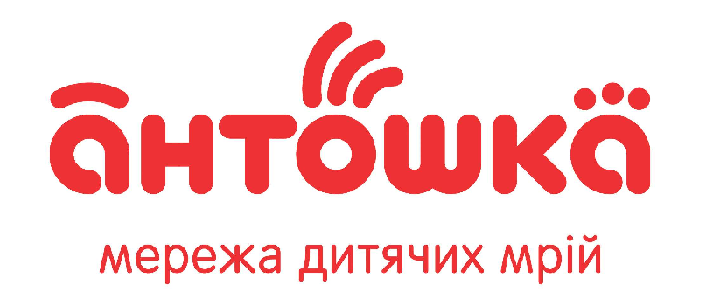
A Short Background
From my Internet-free childhood, I remember “TV Bridges” – a hit of Soviet television. It was a very popular show and an extraordinary event. They were held almost in real time, with a delay of only a couple of seconds, or even less. Two studios in different parts of the world could communicate visually, the correspondents gave a live broadcast from the scene, and Kashpirovsky treated people with hypnotic suggestion.
It was like an international phone call, only with video broadcast via satellite. For those times (1982-1990), it was fantastic. But this technology did not justify itself and very soon it was replaced by the Internet.
In the first years of the existence of the Internet (and these were 1969-1980), live communication through it was almost impossible. For this purpose, telephony was still used. The fastest action provided by the Internet was exchanging emails. It was only in 1988 that a real-time dialogue became possible for all users due to the Internet Relay Chat (IRC1) protocol, but only in text.
It took several more years to get a normal video dialogue, when effective multimedia coding algorithms and data transfer protocols were created. Already in 1991, IP telephony and real-time video transmission possibilities appeared. The web was rapidly advancing, and it was time to begin to say goodbye to the technologies of “teleconference”.
Video Calls, Video Conferences, Video Conferencing
In 1992, InSoft Inc. announced Communique, a teleconferencing software. Up to 10 users could communicate simultaneously. Besides seeing and hearing each other, there were other revolutionary features: app sharing, file sharing, chat and drawing tools. Two years later, Communique introduced the “Virtual Conference Room” function, and it became possible to participate in a video conference with a few clicks. Later, in 1996, Communique became available as an add-on to the most popular browser of the time – Netscape Navigator2.
Another commercial solution from 1995, LiveShare Plus, besides video messaging, allowed Windows users to write text, provide access to a remote desktop, share files, and gave other possibilities.(3)

1995. LiveShare Plus – “The traffic light icon turns green when you speak and red when someone else speaks.” (source – https://www.itweek.ru/themes/detail.php?ID=79896)
There were social projects as well. In 1992, Cornell University created CU-SeeMe – an Internet client for video calls4. CU-SeeMe could work as a video phone with two participants through a direct connection of two computers (Peer-to-peer5), and with a large number of interlocutors through the “central conference server”. Later, it became a commercial project.

1995. Screenshot of CU-SeeMe in which Global Schoolhouse Classes are collaborating (source –https://www.wikiwand.com/en/CU-SeeMe)
Perhaps this was the first implementation of webinars – video conferencing over the Internet. But at that time we did not even know about such technologies. In the post-Soviet space, this wasn’t available, unlike Microsoft NetMeeting.
Since 1996, NetMeeting has been part of MS Windows, available to all its users free of charge. Video calls only required a webcam and a “strong” communication channel. Sound, by the way, was not transmitted at first, and the transmission quality depended largely on the bandwidth of Internet channels. As with a phone call, only two participants could join the conversation. To be honest, it was easier to get on the phone. We had no alternatives available.
The Beginning of the Webinar Era
By 2000, all the ways of using Internet video communication were brought down to five cases:
- video call – a dialogue between two interlocutors;
- technical support – the same dialogue, but with the provision of remote control of the computer;
- working meeting – communication in a small group, up to about 10 people;
- training seminar – one presenter and an unlimited number of listeners;
- conference – several presenters and an unlimited number of listeners.
Each method defined the technology, audience, and platform requirements that implemented it.
Commercial solutions prioritized technical support, work meetings and conferences. At the same time, the term “webinar” (web conference) appeared. These were mostly expensive business solutions.

1997. PlaceWare Auditorium, the first webinar platform capable of bringing up to 1000 attendees (source – http://slideplayer.com)
In 1997, Xerox introduced the first scalable web conferencing server solution, PlaceWare Auditorium. This system could support up to 1000 users in real time, allowing the audience to be divided into separate virtual rooms. The presenter was able to conduct polls and voting and receive feedback in a convenient interface through a browser. The cost of a license (it was required to install special software) for one participant was $150 – quite a big sum of money at that time.
In 2003, this technology was acquired by Microsoft and in 2007 we knew this platform under the name Microsoft Office Live Meeting.
In 2017, Microsoft replaced this technology with Skype for Business6.

1999. Screenshot of Webex.com Virtual Office (source – https://www.researchgate.net/figure/Apple-WebObjects-framework_fig4_30871094)
A little later in 1999, WebEx appeared, which served to solve the same problem of webinars, but was more convenient for business issues.
Acquired by Cisco in 2007, this solution is considered one of the most stable and high-quality web conferencing technologies.
In 2004, GoToMeeting7 offered their solution with video communication for remote technical support and collaboration. Later, they extended their technologies to other cases. At present, it is one of the leading video conferencing platforms.
At the same time, solutions for private users began to appear. In 2003, Skype appeared and it was the most successful solution of the first case – video calls. Skype conveniently combined all the methods of communication between two people in real time – text, voice and video. Free video and voice communication over the Internet has become its key driver of expansion. This program set the trend in personal communications, raised the level of communication quality and brought down the market for international phone calls. (https://ru.wikipedia.org/wiki/WhatsApp#cite_note-22)
The Era of Flash
The real boom in the variety of webinar platforms began around 2010. The technology of 1996, Macromedia Flash8, served as the basis for this.
The essence of the technology was to install the Flash Player application on users’ computers. The player worked like a virtual machine that played vector animation, executed special programs and could exchange data via the Internet in a very compact form.
It was built into browsers for free as a plugin and did its job right inside the web pages that the user was viewing. Computer animation, graphic design capabilities, interactive objects and minimal data transfer traffic ensured universal use for Flash. Already in 2005, ads, games and entire websites were created entirely in Flash. Such popularity did not pass unnoticed – Adobe Systems acquired Macromedia and further development of Flash was performed under the Adobe brand.
A key development in Flash was support for streaming audio and video technologies. In 2002, we were already able to watch videos on websites, having installed only a browser and Flash Player on our computer. By the way, it was Flash that allowed the YouTube startup to be realized in 2005 and develop swiftly in one year.
So, developers gained possession of a very flexible tool for creating beautiful and multifunctional applications that could work via the Internet and be embedded in a browser. This became the basis for the creation of various webinar platforms, competing with each other in terms of capabilities and interface convenience. Open source solutions also began to appear. Here are just a few of these webinar platforms9, 10, 11, 12, 13.
Flash allowed webinars to spread quickly. Participants only needed a browser and a free Flash Player. But these participants were mostly only those who worked on the Windows operating system14.
Mobile Internet, HTML5, and How Webinars Lost Their Leadership
The spread of Android and iOS mobile devices (2007), the introduction of 3G and 4G technologies (2001 – 2009) have changed the behavior of users – communication via the Internet has become mobile. In addition to Skype, there are many available alternatives to conventional telephony – Viber, WhatsApp, ooVoo, FaceTime and others. Calling a friend over the Internet was becoming commonplace. The web browser was becoming the most used application among users.
Mobility has also set new requirements for software – limited use of memory and hardware resources, and low power consumption. Flash technology did not match this in any way.
In 2008, the World Wide Web Consortium (W3C) published the concept of HTML5, which allowed new multimedia and graphic content on web pages – added video, audio and canvas elements, support for scalable vector graphics (SVG) content, and MathML for mathematical formulas, WebGL for using the power of the GPU. The inclusion of the open technologies Canvas, SVG, WebGL in HTML turned them into global substitutions for the closed Flash.
Since 2010, Apple, Google, Microsoft, Mozilla and Opera have sponsored the open-source WebRTC (Web Real-Time Communication) project as part of HTML5 development. This technology implements video and audio communication directly in a web page without the need to install special plugins or software. In 2014, Google Hangouts messenger demonstrated the functionality of WebRTC and it became obvious that Flash webinars would not survive. All webinar browser platforms that were built on its capabilities began to migrate to the new WebRTC.
In 2016, Google abandoned the support for Flash in its Chrome browser15. In 2017, Adobe announced it was discontinuing Flash development in favor of HTML5 technologies. In December 2020, Flash will finally leave the Internet scene.
Since 2010, the available speed of data transfer to the Internet has been growing rapidly. It almost doubles every year 16. The cost of a video call via the Internet is becoming practically free. Messengers that focused on the first case market – video call – began to appear for all platforms, actively spread and cover the tasks of other video communication cases.

2007-2017 years. Growth in the average speed of Internet connections in the United States (source – https://www.statista.com/statistics/616210/average-internet-connection-speed-in-the-us/)
In 2010, Skype introduced group video conferencing for up to 10 people. In 2015, the web version became available – and only a browser was enough for video communication. In 2016, group calling became available in the Skype mobile app, and its corporate version of Skype for Business allowed video calls with 250 participants17.
Competitors developed in parallel as well. Today there are more than a dozen messengers that support group video calling – Skype, Zoom, Microsoft Teams, Google Meet, Facetime, Viber, WhatsApp, Facebook Messenger, Linkchat. Many of them support the broadcast of the screen to the participants and for groups of 10-50 people completely replace webinar platforms.
Live screen broadcasting has successfully replaced the slideshow technology that has been a hallmark of webinar platforms. Text messaging, polls and voting, video recording of communication – all this is also already provided by messengers. It would seem that webinar platforms remain niches for cases of large online conferences and seminars, which can include a huge number of participants. But in these cases, the main task is video broadcasting to a large number of viewers. If we are talking about broadcasting only one participant for everyone else, then this task in 2020 is successfully performed by streaming video services – Youtube, Facebook Live, DaCast, Vimeo Live and others.
What’s Next?
The current state of web conferencing platforms can be seen in the comparative table here – Comparison of Web Conferencing Software — Wikipedia.
Another option for reviewing video conferencing platforms is the comparative chart at https://www.g2.com. As you can see, all these platforms are already united under the general name “Videoconferencing” and it is impossible to immediately single out only webinars among them.
It is difficult to imagine in which direction webinar platforms will develop in the future. Their key advantages, which were still decisive for distance learning and conferences 10 years ago, are now covered by massively available instant messengers and broadcast services. It is already difficult to choose between Zoom and Webex, Skype and Adobe Connect. Just 10 years ago, there was no point in comparing these platforms – they differed so much in their field of application.
Currently, the situation is changing. Webinar platforms are being transformed into integrated services for narrow business areas – marketing, trainings, and conferences. And their main advantage is not video communication, but simplification and automation of related business processes. In any case, they will have to look back at the innovations of modern instant messengers and adapt to the usability trends that form popular video communication programs among users.
I believe that webinars will be allocated for distance learning. But this will happen if they do not remain on their own, but allow flexible integration with various LMS systems of universities, companies, training centers. Only integration with the existing systems will allow webinar technologies to fit quickly into the business processes of their clients. We (LMS Collaborator) are working in this direction and there is definitely a positive experience: https://collaborator.biz/integrations/



































